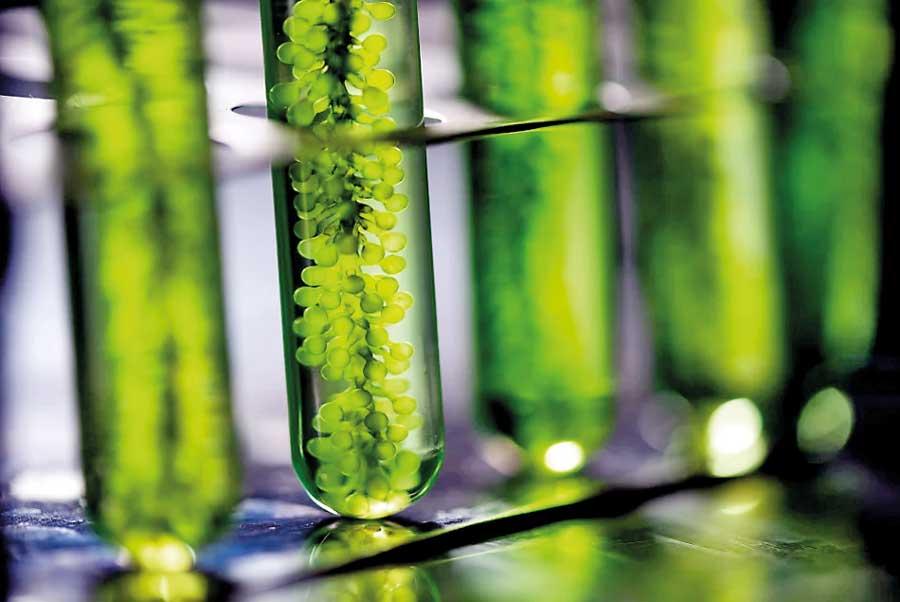25 Jan 2023 - {{hitsCtrl.values.hits}}


There has been much talk recently on using bio-fuel as an alternative source of energy in Sri Lanka due to the unprecedented economic crisis the country is faced with, which caused severe shortages in petrol, diesel and LP gas bringing the country to a grinding halt. The crisis highlighted Sri Lanka’s dangerous reliance on non-renewable forms of energy sources, mainly fossil fuel, which also contribute to increase in atmospheric carbon dioxide (CO2) levels leading to global warming and climate change. Therefore, it is imperative that we, as a country, explore alternative and renewable sources of energy to make use of.
Biomass are plant-based material that can be used as fuel to produce heat or electricity such as wood, wood residue, agriculture residues etc. Biomass is considered as a renewable energy source as it can regenerates itself and unlike fossil fuel, it has net zero carbon emission. Make no mistake, burning of both biomass and fossil fuel release CO2 into the atmosphere but as biomass takes up (fix) atmospheric carbon dioxide (CO2) by photosynthesis during plant growth and during its combustion it releases the same amount of CO2 back to the atmosphere, resulting in no net increase in atmospheric CO2 levels. Whereas fossil fuel represents a stored form of carbon derived from organisms that died millions of years ago and therefore, combustion of fossil fuel will cause a net increase in the atmospheric CO2 levels.
But resorting to firewood as a source of energy (this form of energy is called dendro power) on mass scale could have an adverse impact on already dwindling forest cover in Sri Lanka. Therefore, it is necessary to identify a source of biomass that can be adapted in Sri Lanka without adversely effecting environment and food security.
Some biomass can be directly converted into liquid fuel that can be used as transportation fuel and these are referred to as biofuel. One such example is ethanol which is produced from fermentation of plant sugars and starches using microbes such as yeast. In Brazil and India, bio-ethanol is mainly produced using sugarcane. Starchy masses such as corn is used in USA for bio-ethanol production while in Europe, wheat and sugar beet is used. Ethanol can be blended with petrol up to 15% and can be used to power conventional petrol-powered vehicles.
However, as Sri Lanka is not yet producing sufficient amounts of sugarcane or rice to meet the country’s food demand, diverting sugarcane and rice for ethanol production is not a viable option. Intense research carried out in other parts of the world, paved the way to convert agricultural waste residues (ex. hay, plant straws, corn stover, sugarcane bagasse), fast growing woody biomass and waste wood (lignocellulose material) into ethanol. In 2017, 1.1% of the overall ethanol production in the United States was from biomass. Brazil, Slovakia, Italy, Sweden and Norway also have industrial plants that convert lignocellulose material to ethanol. This form of ethanol production can be a very viable option in Sri Lanka (esp. using rice straw, wood chips and saw dust) if funding can be allocated for the research and development work necessary.
Biodiesel refers to liquid fuel based on vegetable oil or animal fat that can be blended with petroleum-based diesel to power present diesel engines without any requirement for modifications or alternations. Biodiesel is not only sustainable, non-toxic, green and does not contribute to global warming, but also reduces engine wear by about 30% due to the excellent lubrication it provides. Also, as biodiesel combustion doesn’t release sulfur dioxide unlike petroleum based-diesel, it doesn’t contribute to acid rains and has far-lesser adverse environmental impact. Blending 20% biodiesel with 80% of petroleum-diesel is known to produce the optimum blend, as it has a higher octane rating (lower “knocking”), superior lubrication properties, significantly lower toxic emissions along with very low soot emissions while maintaining similar fuel consumption and power generation capacity. Thus, switching to biodiesel or biodiesel blends will have an enormous economic advantage to Sri Lanka.
Many plant-based oil produced in Sri Lanka are food resources (ex. Coconut oil, Soya oil, Palm oil) and are not produced in sufficient quantities to be diverted to produce biodiesel without effecting our food security. From early 1980s, microalgae have been investigated as a renewable and non-food energy source that can be used for biodiesel production. Microalgae are photosynthetic, single cellular (unicellular) organisms that resides in saltwater or freshwater environments. Some algal strains are known to accumulate high lipid/oil content, recording up to 60% of their dry biomass which can be extracted to produce biodiesel. As algae have high growth rates, high product yields can be achieved compared to terrestrial plants in a short period.
If saltwater microalgae strains are cultured for biodiesel production, there will not be any effect on freshwater resources in the country and they can be easily cultured in non-arable lands. Sri Lanka provides ideal environmental conditions to mass cultivate algae due to availability of rather intense sunlight throughout the year and presence of saline water surrounding the country. Further, as algae can be cultured in non-arable lands, their mass cultivation will not affect agricultural land usage in Sri Lanka and will not be detrimental to food security in the country. Therefore, mass cultivation of algae as a source of an alternative energy (biodiesel) can be a viable and economically beneficial option to Sri Lanka.
As algae has high photosynthetic capacity than terrestrial plants, their capacity to sequester CO2 from atmosphere is very high. Some strains of microalgae can capture very high CO2 concentrations often seen in industrial flue gas emitted from coal power plants. This is of particular importance to Sri Lanka as coal remains as the cheapest fossil fuel source available for electricity generation. As Sri Lanka is currently experiencing energy crisis, expansion of the existing coal power plant (Lakvijaya coal power plant) and addition of another coal power plant at Sampoor has been recommended as solutions to meet the energy demand. As coal power plants emit industrial flue gas which contains high concentrations of CO2, it is possible to use this flue gas as food (feedstock) to culture algae. Therefore, mass scale cultivation of algae can off-set the negative environmental impact of coal power plants while ensuring electricity demands of the country is met. Algae can be cultivated in open ponds or closed systems called photobioreactors that allows sunlight to penetrate into the algal culture. The growth rate and accumulation of oil in algae are affected by several factors such as nutrient availability, CO2 concentration, temperature, alkalinity or acidity of the culture medium, and the availability of sunlight (intensity and duration of light). During the harvesting of cultured algae cells, the culture media has to be separated from the algal mass. This is achieved flocculation, where a chemical is added to clump algae cells together followed by filtering to isolate the clumped algae cells. Harvesting is often followed by dewatering, where the water content in algae cells are reduced to obtain a dried biomass. The dried algae biomass can be used in a mechanical press (oil press) to extract the oil present in them and generally about 70% of oil present in algae can be extracted using this method. Algae oil can also be extracted using organic solvents such as hexane but this method can be costly. Extracted algae oil must be processed first as it is too viscous to be used as fuel. Therefore, a chemical treatment called transesterification is done to convert the algae oil into bio-diesel.
Apart from bio-diesel production, microalgae biomass can be used for other applications such as bioactive compound isolation, cosmeceutical and nutraceutical production (ex: Spirulina dietary supplement, face masks etc.). Lipid extracted algae can be used for the production of bio-oil, bio-char, ethanol, and bio-gas (methane). Microalgae can be used to produce biofertilizers too, as they are rich in nitrogen and phosphorous compounds. In summary, investing into research and development of biodiesel using microalgae can generate significant socio-economic benefits to Sri Lanka.
25 Nov 2024 10 minute ago
25 Nov 2024 22 minute ago
25 Nov 2024 24 minute ago
25 Nov 2024 25 minute ago
25 Nov 2024 33 minute ago